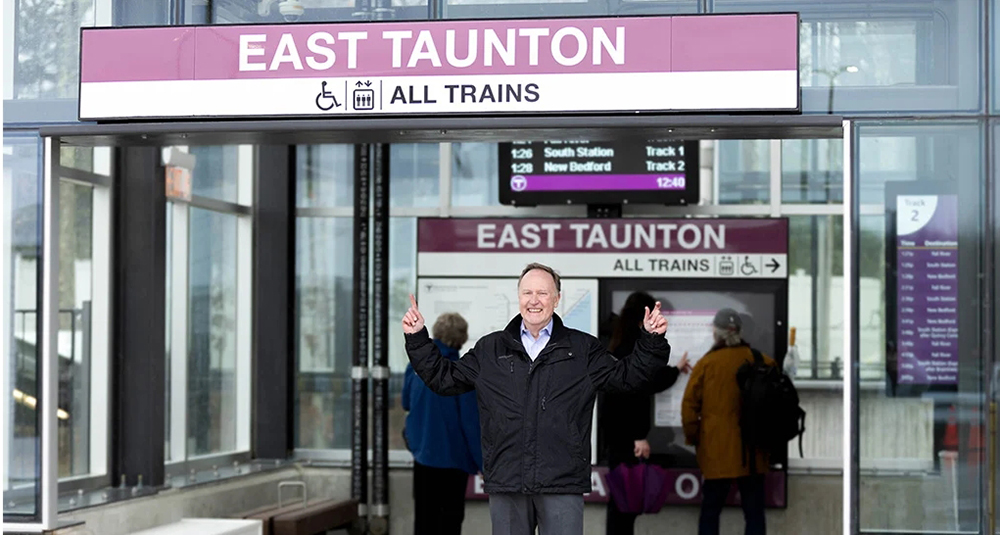News:
Spotlight Content
Posted: July 28, 2011
Garry Holmes and Craig Johnston - 2011 will mark the turnaround for Boston's suburban office market; well positioned for future
The Boston suburban office market experienced slight negative absorption in Q2. However, we still feel 2011 will prove to be the turnaround year for our industry. Although moderate, there certainly is more tenant activity in the market. The Boston suburban office market totals 85.6 million s/f with a combined availability rate of 23.1%. By year end we expect the availability rate will decline to 22.7%, reflecting modest positive absorption.
What is impressive is the recent rent appreciation for Class A properties in the Central Rte. 128 market. Properties in this area are now averaging $32-$35 per s/f. This rent appreciation is another signal that the office market has rebounded. As tenants in the Central Rte. 128 area search for more economical alternatives, the surrounding submarkets start to benefit. The Rte. 128 north and south submarkets along with Framingham/Natick will be prominent beneficiaries for the balance of the year and into 2012.
The flight to quality is still noticeable with tenants trading up to Class A space. This trend is magnifying the rent differential between Class A and B buildings. At this time, Class A properties in most submarkets have a vacancy rate below 12%. For the most part, Class B rents are going to remain flat or decrease slightly for the balance of the year. Thus, the rent gap between Class A and B buildings will be much more pronounced, and in some core submarkets, will exceed $10 per s/f.
Start-up and venture backed companies are beginning to reemerge (according to CB Insights "Venture capital investing in Mass companies reached 1.14 billion in the 2nd quarter of the year - easily surpassing the state's best quarter for VC of 2010"), but it does not appear they will have a pronounced impact on the suburban office market as a whole. Unlike the early 2000s where a fledgling company would base their space needs on three to five years of anticipated growth, the start-ups today are far more conservative when leasing space. Furthermore, traditional companies have decreased the square foot leased per employee. Both individual offices and cubicle sizes are shrinking as companies pursue more efficient space utilization. We anticipate positive absorption will continue into 2012 and beyond, but these factors will certainly limit any substantial decline in vacancy rates for the short term.
At the start of 2010, we predicted the volume of sales transactions would be quite moderate for the next two years. This prediction has held true. Much to the chagrin of investors, the financial institutions and special servicers continue to pursue prolonged workouts rather than a disposition strategy. Core properties with credit tenants continue to command premium pricing at or above peak values in 2008. However, properties with vacancy are getting hammered with valuations often plummeting by 50%. Meanwhile, financing markets have recovered. Not only are the banks and life insurance companies aggressively pursuing deals, but we are also witnessing the reemergence of the CMBS market.
The biggest challenge will be for the class B buildings. A number of class B buildings do not have the cash reserves to invest in the necessary capital improvements to remain competitive. For those owners that have the financial means, they need to be proactive in order to differentiate themselves. In most submarkets, there are at least 20 different options for class B space between 4,000-10,000 s/f. More importantly, these spaces are now remaining vacant (on average) for 20 months. In addition to making the obvious improvements to enhance the first impression (lobby, elevators, and other common areas) it is imperative to buildout tired space so it is in "move in" condition, or at a minimum install new carpet and a dropped ceiling for a better appearance.
Modest positive absorption will occur for 2011 and pick up a little momentum in 2012 as tenant activity increases. Downward pressure on rental rates has subsided with the exception of class B space along the I-495 submarkets. The rent appreciation that is occurring along central Rte. 128 will push into surrounding submarkets. One of the most positive trends is that companies are finally making longer term lease commitments. There is essentially no new construction and a very limited amount of sublease space. With the return of these strong fundamentals the Boston suburban office market is well positioned for the future.
Garry Holmes, SIOR, is president and Craig Johnston is senior vice president of R.W. Holmes Realty Co., Inc., Wayland, Mass.
Tags:
Spotlight Content
MORE FROM Spotlight Content
Check out the New England Real Estate Journal's 2025 Fall Preview Spotlight
NEREJ’s Fall Preview is Out Now!
Explore our Fall Preview Spotlight, featuring exclusive Q&As with leading commercial real estate professionals and in-depth byline articles on today’s most relevant market topics. Gain insight into the trends, challenges, and opportunities shaping New England’s commercial real estate landscape this fall.
Explore our Fall Preview Spotlight, featuring exclusive Q&As with leading commercial real estate professionals and in-depth byline articles on today’s most relevant market topics. Gain insight into the trends, challenges, and opportunities shaping New England’s commercial real estate landscape this fall.

Columns and Thought Leadership

How do we manage our businesses in a climate of uncertainty? - by David O'Sullivan
These are uncertain times for the home building industry. We have the threat of tariffs mixed with high interest rates and lenders nervous about the market. Every professional, whether builder, broker, or architect, asks themselves, how do we manage our business in today’s climate? We all strive not just to succeed, but

How long should I hold a property for it to qualify as an investment property in connection with a 1031 tax-deferred exchange? - by Brendan Greene and Mark McCue
Internal Revenue Code (IRC) Section 1031 provides “No gain or loss shall be recognized on the exchange of property held for productive use in a trade or business or for investment if such property is exchanged solely for property of like kind which is to be held

30 years on South Coast Rail: A journey to connect Southeastern Mass. with commuter rail - by Rick Carey
On March 24, 2025, a dream more than three decades in the making became a reality with the launch of the Massachusetts Bay Transportation Authority’s (MBTA) South Coast Rail commuter service. This milestone marks the completion of a project that overcame numerous starts and stops, including changes in leadership

Shallow-bay wins on 495/128: A renewal-driven market with a thin pipeline - by Nate Nickerson
The Boston industrial market entered mid-2025 in a bifurcated state. Large-block vacancy remains elevated, while shallow-bay along the 495/128 corridor continues to prove resilient. Fieldstone’s focus on this geography positions us squarely in the middle of a renewal-driven, supply-constrained










.png)